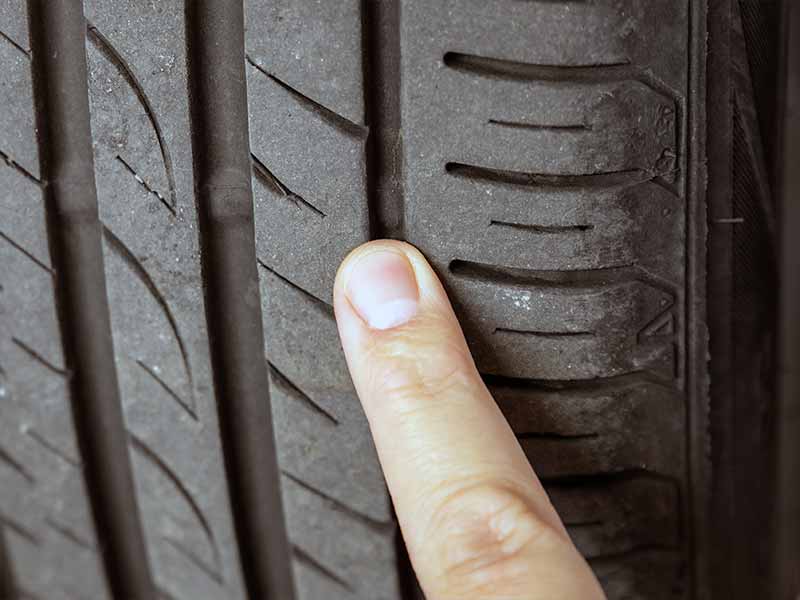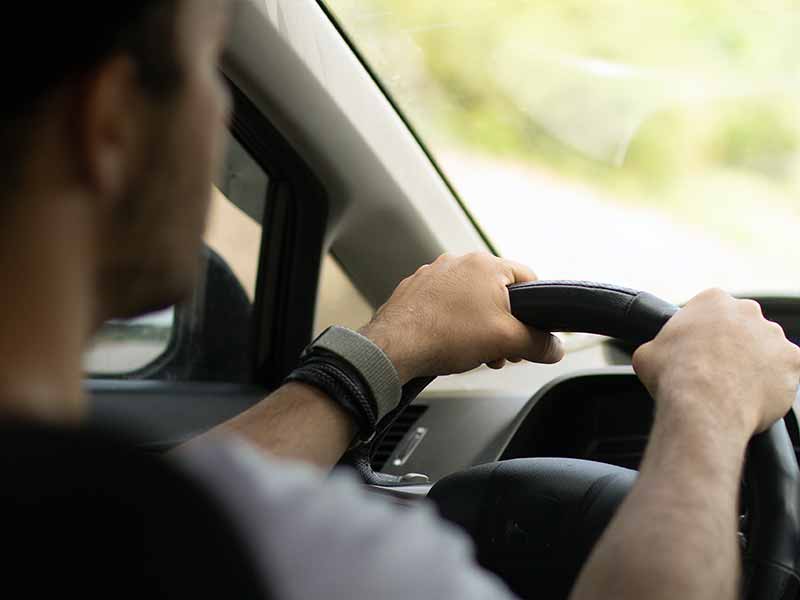You’ve heard about the magic of run flat tires, their promise of driving even after a puncture. But amidst the buzz, there’s a lingering question: Are they noisier than your regular tires? Dive in as we unravel the truth behind the hum and rumble of run flat tires.
Are Run Flat Tires Noisy?
While run flat tires might also be perceived as noisier compared to conventional tires, they offer the advantage of added safety and convenience.
They are specially designed tires that allow a vehicle to continue driving for a limited distance even after they lose air pressure, typically due to a puncture.
In this article, we’ll delve deep into the world of run flat tires, exploring their design, the noise factor, their pros and cons, and the importance of proper maintenance to ensure optimal performance.
Let’s take a closer look.
What are Run Flat Tires?
Run flat tires, often referred to as “run flats,” are a specialized type of tire designed to remain functional even after losing air pressure. This means that if you get a puncture or a blowout while driving, you can continue driving for a limited distance without the tire going completely flat. This feature offers drivers added safety and convenience, especially during situations where changing a tire isn’t immediately feasible.
Key Features of Run Flat Tires
- Self-Supporting Structure: The primary feature that distinguishes run flat tires from conventional tires is their reinforced sidewall. This structure allows the tire to support the weight of the vehicle even when it’s deflated.
- Limited Driving Range Post-Puncture: Even though run flat tires can function after a puncture, they’re not meant for extended use in this state. Typically, you can drive for about 50 to 100 miles at a reduced speed (usually up to 50 mph) after a puncture. This gives you enough time to reach a safe location or a tire shop for repairs or replacement.
- Pressure Monitoring System: Most vehicles equipped with run flat tires also have a Tire Pressure Monitoring System (TPMS). This system alerts the driver when a tire is losing air, ensuring they’re aware of the situation and can take appropriate action.
Advantages of Using Run Flat Tires
- Safety: One of the primary benefits of run flat tires is enhanced safety. If a conventional tire gets punctured at high speeds, it can lead to a sudden loss of control. With run flats, the reinforced sidewall prevents the tire from collapsing, allowing the driver to maintain control and pull over safely.
- Convenience: With run flat tires, you can continue driving to a more suitable location for changing the tire or seeking professional help, eliminating the need to change the tire on a busy highway or in adverse weather conditions.
Considerations When Using Run Flat Tires
- Replacement Needs: Once a run flat tire has been punctured and driven on, it often needs to be replaced rather than repaired. This is due to the potential damage the tire’s structure might have sustained while being driven deflated.
- Specialized Equipment: Repairing or replacing run flat tires often requires specialized equipment. Not all tire shops have this equipment, so it’s essential to find a shop familiar with these types of tires.

The Noise Factor: Are Run Flat Tires Noisier?
When it comes to the auditory experience of driving, tires play a significant role. The noise produced by tires, often referred to as “tire noise,” can be influenced by various factors, including the tire’s design, tread pattern, and the road surface. One common question many drivers have is whether run flat tires are noisier than conventional tires.
Understanding Tire Noise
- Sources of Tire Noise: Tire noise can be attributed to several sources:
- Tread Pattern: The design of the tire’s tread can produce varying noise levels. Some patterns are quieter, while others might produce a humming or whirring sound.
- Road Surface: Rough or uneven road surfaces can increase tire noise. For instance, driving on gravel or old, worn-out asphalt can be noisier than smooth, newly-paved roads.
- Tire Construction: The materials and construction methods used in a tire can influence its noise levels.
Run Flat Tires and Noise
- Reinforced Sidewalls: The primary feature that allows run flat tires to function even after a puncture—the reinforced sidewall—can also contribute to increased noise. This is because the stiffer sidewall can transmit more road noise to the vehicle’s cabin.
- Specific Cases: Some drivers, especially those with certain vehicle brands like BMW, have reported increased tire noise with run flats. However, it’s essential to note that noise perception can be subjective and can vary based on individual sensitivity and vehicle acoustics.
Comparing Noise Levels
- Run Flats vs. Conventional Tires: While some drivers feel that run flat tires are noisier, others might not notice a significant difference. Several factors can influence this perception:
- Vehicle Insulation: Cars with better insulation and soundproofing can mitigate the effects of tire noise, making the difference between run flats and conventional tires less noticeable.
- Driving Conditions: The noise difference might be more evident at certain speeds or on specific road surfaces.
Reducing Tire Noise
- Proper Maintenance: Ensuring that your tires are well-maintained can help reduce noise. This includes:
- Regularly checking and maintaining the correct tire pressure.
- Rotating the tires to ensure even wear.
- Replacing tires when the tread becomes worn or damaged.
- Choosing the Right Tire: If noise is a significant concern, consider researching and choosing tires known for their quiet performance. Some tire manufacturers design tires specifically to reduce road noise.

Why Might Run Flat Tires be Noisier?
The unique construction of run flat tires provides them with the ability to function even after a puncture. However, this same construction might also contribute to them being perceived as noisier than conventional tires. Let’s delve into the reasons behind this perception.
The Role of Sidewall Construction
- Reinforced Sidewalls: Run flat tires have reinforced sidewalls that allow them to support the vehicle’s weight even when deflated. This reinforcement, while providing the benefit of continued mobility after a puncture, can also lead to:
- Increased transmission of road vibrations.
- Less absorption of road irregularities, leading to more noise.
Tire Pressure and Noise
- Importance of Correct Pressure: The air inside a tire acts as a cushion, absorbing some of the road noise. If a tire is under-inflated or over-inflated:
- It can change the tire’s contact patch with the road, potentially increasing noise.
- The tire might not absorb road irregularities as effectively, leading to a harsher ride and more noise.
- Run Flats and Pressure Monitoring: Vehicles equipped with run flat tires often come with a Tire Pressure Monitoring System (TPMS). This system is crucial because:
- It alerts drivers to changes in tire pressure, ensuring they can maintain optimal pressure levels.
- Properly inflated run flat tires can help mitigate some of the noise concerns.
Tread Design and Noise
- Tread Pattern Influence: The design of a tire’s tread can significantly influence the noise it produces. Some tread patterns are inherently noisier due to their design.
- Run flat tires, like all tires, come in various tread designs. Choosing a tread pattern known for quieter performance can help reduce noise.
Comparing with Conventional Tires
- Flexibility and Absorption: Conventional tires, without the reinforced sidewalls of run flats, can flex more. This flexibility can:
- Help in absorbing some road irregularities.
- Potentially lead to a quieter ride compared to run flats.
- Trade-offs: While run flat tires might be perceived as noisier in some situations, it’s essential to remember the trade-offs. The added safety and convenience of being able to drive after a puncture can outweigh the potential increase in noise for many drivers.

The Pros and Cons of Run Flat Tires
Run flat tires, with their unique design and capabilities, offer several advantages to drivers. However, like any product, they come with their own set of drawbacks. Understanding these pros and cons can help drivers make informed decisions about whether run flat tires are the right choice for their needs.
Advantages of Run Flat Tires
- Enhanced Safety:
- Run flat tires reduce the risk of a blowout, which can be especially dangerous at high speeds.
- Their design allows drivers to maintain better control of the vehicle if a puncture occurs, reducing the risk of accidents.
- Convenience on the Road:
- Drivers can continue their journey for a limited distance even after a puncture, eliminating the immediate need for a roadside tire change.
- This feature is particularly beneficial in adverse weather conditions or unsafe locations.
- Reduced Need for Spare Tire:
- With the ability to drive on a punctured tire, the necessity for carrying a spare tire is reduced. This can free up trunk space and reduce vehicle weight, potentially improving fuel efficiency.
- Peace of Mind:
- Knowing that a puncture won’t leave you stranded can provide significant peace of mind, especially during long trips or when driving in remote areas.
Drawbacks of Run Flat Tires
- Potential for Increased Noise:
- As discussed in previous sections, the reinforced sidewall design can lead to a perception of increased road noise in some vehicles or conditions.
- Diminished Ride Quality:
- The stiffer sidewalls can result in a harsher ride, as they might not absorb road irregularities as effectively as conventional tires.
- Replacement Over Repair:
- Once a run flat tire has been driven on after a puncture, it often needs to be replaced rather than repaired due to potential structural damage.
- Cost Implications:
- Run flat tires can be more expensive than conventional tires, both in terms of initial purchase and potential replacement costs.
- Not all tire shops carry or are equipped to handle run flat tires, which might limit replacement or repair options.
- Limited Driving Post-Puncture:
- While run flat tires allow continued driving after a puncture, it’s only for a limited distance (typically 50 to 100 miles) and at reduced speeds. This means they’re a temporary solution, and drivers will still need to address the puncture promptly.
Resources
Below are some links you may find helpful when learning about tires
- Run flat tires: How they work & when should you use them – Les Schwab
- 5 reasons to ditch run flat tires for regular tires – Auto Evolution
Final Thoughts
Run flat tires ability to function even after a puncture can be a game-changer, especially in challenging situations. However, like all automotive components, they come with their own set of considerations.
While some drivers might find them noisier, the trade-offs in terms of safety and the peace of mind they offer can outweigh potential drawbacks. Regular maintenance, including checking tire pressure and ensuring even wear, can optimize their performance and longevity.
Good luck and happy motoring.





